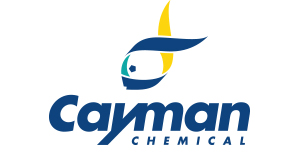Retatrutide (sodium salt)
Retatrutide (sodium salt)
SKU
CAY39747-1
Packaging Unit
1 mg
Manufacturer
Cayman Chemical
Availability:
loading...
Price is loading...
Formulation: A solid
Formal Name: L-tyrosyl-2-methylalanyl-L-glutaminylglycyl-L-threonyl-L-phenylalanyl-L-threonyl-L-seryl-L-α-aspartyl-L-tyrosyl-L-seryl-L-isoleucyl-2-methyl-L-leucyl-L-leucyl-L-α-aspartyl-L-lysyl-N6-[N-(19-carboxy-1-oxononadecyl)-L-γ-glutamyl-2-[2-(2-aminoethoxy)ethoxy]acetyl]-L-lysyl-L-alanyl-L-glutaminyl-2-methylalanyl-L-alanyl-L-phenylalanyl-L-isoleucyl-L-α-glutamyl-L-tyrosyl-L-leucyl-L-leucyl-L-α-glutamylglycylglycyl-L-prolyl-L-seryl-L-serylglycyl-L-alanyl-L-prolyl-L-prolyl-L-prolyl-L-serinamide, sodium salt
Purity: ≥98%
Formula Markup: C221H342N46O68 • XNa
Formula Weight: 4731,3
Shelf life (days): 1460
Notes: Retatrutide is a triple agonist of the glucagon receptor (GCGR), glucagon-like peptide 1 receptor (GLP-1R), and gastric inhibitory polypeptide receptor (GIP receptor), also known as the glucose-dependent insulinotropic polypeptide receptor.{67718} It induces cAMP accumulation in HEK293 cells expressing the human GCGR, GLP-1R, or GIP receptor (EC50s = 5.79, 0.775, and 0.0643 nM, respectively). Retatrutide (0.1-30 nmol/kg) decreases plasma glucose levels in an intraperitoneal glucose tolerance test in mice. It decreases body weight, calorie intake, fat mass, and lean mass in a mouse model of diet-induced obesity in a dose-dependent manner. Acute administration of retatrutide (10 nmol/kg) delays gastric emptying and chronic administration for 10 days decreases food intake and body weight in mice.{67719}
Formal Name: L-tyrosyl-2-methylalanyl-L-glutaminylglycyl-L-threonyl-L-phenylalanyl-L-threonyl-L-seryl-L-α-aspartyl-L-tyrosyl-L-seryl-L-isoleucyl-2-methyl-L-leucyl-L-leucyl-L-α-aspartyl-L-lysyl-N6-[N-(19-carboxy-1-oxononadecyl)-L-γ-glutamyl-2-[2-(2-aminoethoxy)ethoxy]acetyl]-L-lysyl-L-alanyl-L-glutaminyl-2-methylalanyl-L-alanyl-L-phenylalanyl-L-isoleucyl-L-α-glutamyl-L-tyrosyl-L-leucyl-L-leucyl-L-α-glutamylglycylglycyl-L-prolyl-L-seryl-L-serylglycyl-L-alanyl-L-prolyl-L-prolyl-L-prolyl-L-serinamide, sodium salt
Purity: ≥98%
Formula Markup: C221H342N46O68 • XNa
Formula Weight: 4731,3
Shelf life (days): 1460
Notes: Retatrutide is a triple agonist of the glucagon receptor (GCGR), glucagon-like peptide 1 receptor (GLP-1R), and gastric inhibitory polypeptide receptor (GIP receptor), also known as the glucose-dependent insulinotropic polypeptide receptor.{67718} It induces cAMP accumulation in HEK293 cells expressing the human GCGR, GLP-1R, or GIP receptor (EC50s = 5.79, 0.775, and 0.0643 nM, respectively). Retatrutide (0.1-30 nmol/kg) decreases plasma glucose levels in an intraperitoneal glucose tolerance test in mice. It decreases body weight, calorie intake, fat mass, and lean mass in a mouse model of diet-induced obesity in a dose-dependent manner. Acute administration of retatrutide (10 nmol/kg) delays gastric emptying and chronic administration for 10 days decreases food intake and body weight in mice.{67719}

 Deutsch
Deutsch










